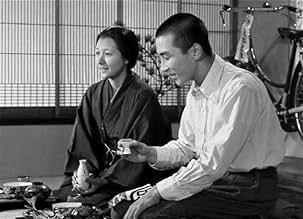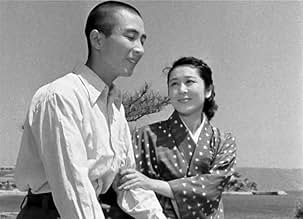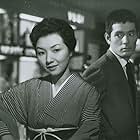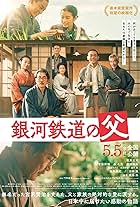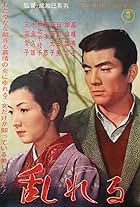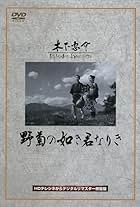Schoolteacher Hisako Oishi forms an emotional bond with her pupils and teaches them various virtues, while at the same time worrying about their future.Schoolteacher Hisako Oishi forms an emotional bond with her pupils and teaches them various virtues, while at the same time worrying about their future.Schoolteacher Hisako Oishi forms an emotional bond with her pupils and teaches them various virtues, while at the same time worrying about their future.
- Awards
- 10 wins & 1 nomination total
- Director
- Writers
- All cast & crew
- Production, box office & more at IMDbPro
Storyline
Did you know
- TriviaAccording to Japanese film critic and historian Tadao Satô, in casting this film about a schoolteacher and her relationships with her pupils over many years, director Keisuke Kinoshita very cleverly chose pairs of look-alike siblings to portray the students. So for those scenes set in later years, Kinoshita simply substituted the older siblings for the younger ones, so that the schoolchildren appeared to "grow" before the audience's eyes.
- ConnectionsReferenced in Violence at Noon (1966)
- SoundtracksAnnie Laurie
Featured review
People who view this film would do well to consider the sentiment of post-war Japan in the mid-50s, when the future was still uncertain and the vast devastation and shame caused by the war were prevalent in the mindset of its citizens.
The timing for this film's release was significant, because perhaps for the first time, it permitted the people of Japan to cry unabashedly for themselves, far removed from any political statement so frequent in Shochiku films such as with many of Kurosawa's classics. Movies at the time tended to have positive, uplifting themes that motivated the populous to help rebuild the country into a modern democratic nation. You can thank Douglas MacArthur for that.
The post-war generation was now almost 10 years old, and in the Japanese psyche was the need for justification for its darkest period in history.
This film served as a reminder of the horrors of war, not from the battlefields, but from the emotional scars left on its children who lived and died during it.
Hideko Takamine brilliantly played the role of a school teacher on a typical remote island community in south Japan during an increasingly militarist government. As was customary at the time, the same teacher saw to their students' education from primary to high school, forming a lifetime bond.
Director Keisuke Kinoshita's camera work is nothing less than genius, beautifully portraying the transitions of seasons from year to year. The water, sand, and dust textures are so distinct that you almost forget that it was filmed in black and white.
The character closeups are never exaggerated and the 12 children actors (hence "24 Eyes") do an outstanding job portraying how they end up sacrificing their childhood dreams due to poverty and for national duty.
Of symbolic note is the appearance of the Island bus, which is seen at first with Japanese kanji characters painted on the side. Later in the film, it's written in English as "Shima Bus", signifying how modernization has reached the island after the war.
From cast, location and cinematography, Nijushi no Hitomi is a masterpiece of emotional storytelling.
The timing for this film's release was significant, because perhaps for the first time, it permitted the people of Japan to cry unabashedly for themselves, far removed from any political statement so frequent in Shochiku films such as with many of Kurosawa's classics. Movies at the time tended to have positive, uplifting themes that motivated the populous to help rebuild the country into a modern democratic nation. You can thank Douglas MacArthur for that.
The post-war generation was now almost 10 years old, and in the Japanese psyche was the need for justification for its darkest period in history.
This film served as a reminder of the horrors of war, not from the battlefields, but from the emotional scars left on its children who lived and died during it.
Hideko Takamine brilliantly played the role of a school teacher on a typical remote island community in south Japan during an increasingly militarist government. As was customary at the time, the same teacher saw to their students' education from primary to high school, forming a lifetime bond.
Director Keisuke Kinoshita's camera work is nothing less than genius, beautifully portraying the transitions of seasons from year to year. The water, sand, and dust textures are so distinct that you almost forget that it was filmed in black and white.
The character closeups are never exaggerated and the 12 children actors (hence "24 Eyes") do an outstanding job portraying how they end up sacrificing their childhood dreams due to poverty and for national duty.
Of symbolic note is the appearance of the Island bus, which is seen at first with Japanese kanji characters painted on the side. Later in the film, it's written in English as "Shima Bus", signifying how modernization has reached the island after the war.
From cast, location and cinematography, Nijushi no Hitomi is a masterpiece of emotional storytelling.
- guardian-genghis
- Mar 17, 2007
- Permalink
- How long is Twenty-Four Eyes?Powered by Alexa
Details
- Runtime2 hours 36 minutes
- Color
- Sound mix
- Aspect ratio
- 1.37 : 1
Contribute to this page
Suggest an edit or add missing content






